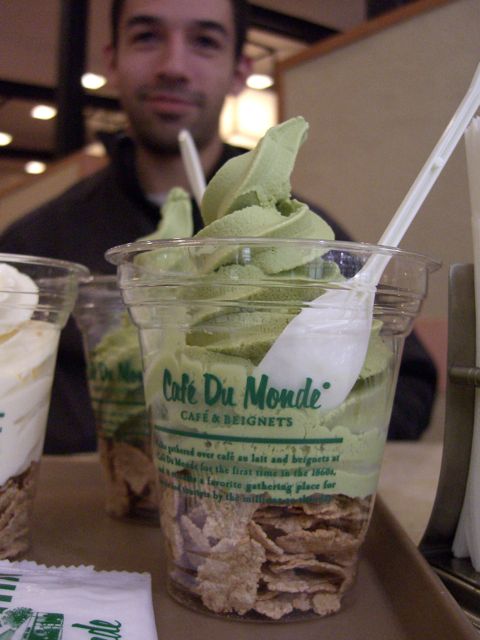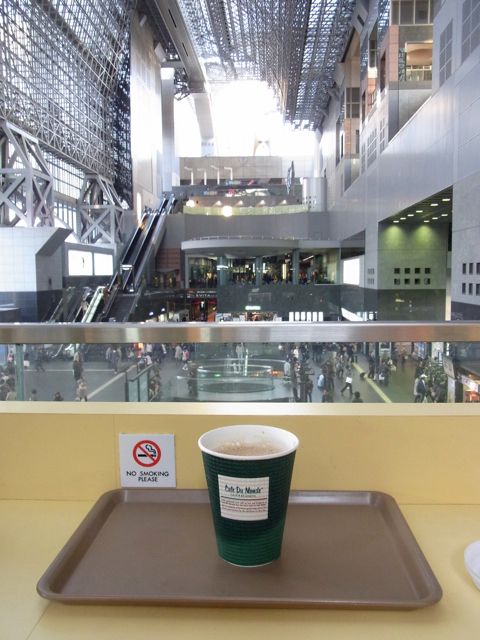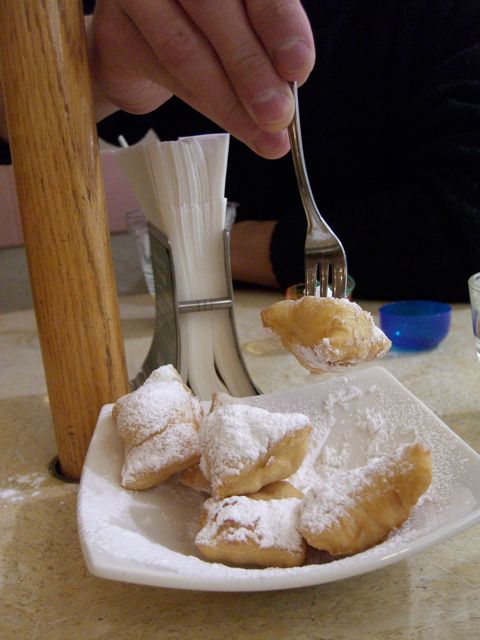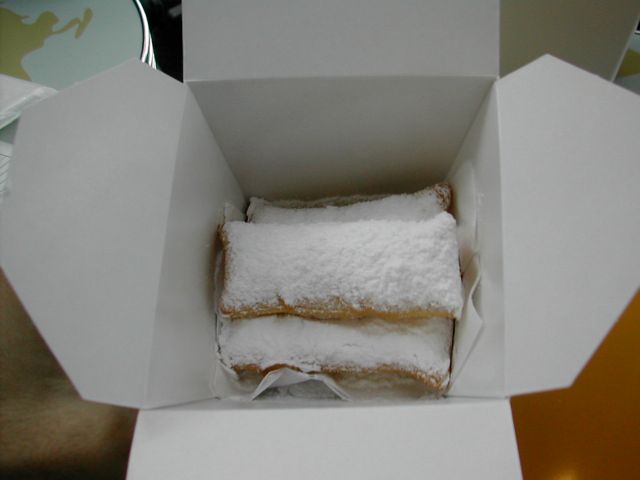Last Chance to Catch NYC's Holiday Notalgia Train
We met the voices of the NYC subway on our nostalgia ride this weekend!


Japan is familiar with foreign franchises. McDonald’s arrived in 1971 (PDF) and began like many chains as a high-end fad (in Ginza, nonetheless) before becoming a ubiquitous part of local culture. One of the most recent chains is Krispy Kreme, which had hours-long lines at its first stores but in the past few years has expanded further, reducing the wait time.
However, the gleam of a foreign logo alone isn’t enough to be successful in Japan. Wendy’s and Burger King both came into the market in the 90s and were both forced out, Burger King in 2001 and Wendy’s in 2009. Burger King returned in 2007 with smaller operational goals.
Over that same period of time, Café du Monde, a New Orleans-based coffee franchise, has managed to find success in Japan on a smaller scale.
Café du Monde, New Orleans’ oldest coffee stand, opened in the French Market in 1862, and it remained the only location for 123 years. In 1985, a second location opened in Esplanade Mall on the outskirts of the city, and after that things changed quickly. The restaurant began offering ice café au lait in addition to the traditional hot café au lait in 1988, and other locations opened in Lakeside Mall, the Riverwalk, and across Lake Ponchatrain in Mandeville.
The menu at all the locations, however, has remained typically sparse; the only options are beignets, café au lait, and a small assortment of drinks. The selection is limited enough that the menu fits on the side of napkin dispensers.
Café du Monde did experiment with franchises in the U.S., opening a location in the Underground in Atlanta, George, but it was scaled back, and currently there are only eight locations in the Greater New Orleans Area. So it comes as a surprise that in the past 22 years, the Japanese Café du Monde franchise has expanded to 20 locations, not only in big cities such as Tokyo, Kyoto, and Osaka, but also as far away as Hiroshima and as isolated as Kochi City. The Japan franchise has expanded the original menu, offering light fare and several different varieties of beignets:
The first hint of international expansion comes in the late-80s. When Café du Monde opened its New Orleans Centre location in 1988, co-owner Bob Maher noted in a September 28 Times-Picayune article that the beignet mixes “sell well ”” we’re even selling some of it in Japan.”
Café du Monde was franchised two years later in 1990 by Duskin, the cleaning products and food services conglomerate that also operates the Mister Donut franchise. While Mister Donut is an American brand, in the U.S. the franchise was purchased and incorporated into the Dunkin Donuts franchise.
The Japanese Café du Monde franchise has for the most part maintained the same aesthetic as the original ”” the locations all use the same green and white color scheme, and the stores are designed in the style of French Quarter architecture. The drinks, too are the same ”” the stores use Café du Monde coffee with chicory and even sell souvenir versions. While the hot dogs and other light fare are unremarkable, the beignets and café au lait are authentic.

The Japanese beignets are even cooked more consistently than their American counterparts, despite the fact that they offer some interesting varieties on the traditional powdered sugar topping: there are cinnamon beignets, ice cream beignets, and beignets with fruit dip. They even offer seasonal desserts such as frozen drinks and green tea soft serve ice cream over sweetened cornflakes.

The secret to the franchise’s success in Japan may be the moderate flavors. Unlike many American desserts, beignets are only semi-sweet. They are covered with powdered sugar, but the dough itself is bready rather than sweet like an American-style glazed donut. Traditional Japanese desserts such as dango and daifuku have a similar level of sweetness.
The Kyoto Station branch is one of the most iconic of the Japanese locations. The restaurant is on a terraced second floor area of the futuristic building, and customers can look out over the central hallway while sipping on café au lait.

Unfortunately, the Kyoto Station branch stopped serving beignets several years ago. In late-2003 they offered perfectly shaped, sushi-size beignets served in paper boxes.


The longest running store is the Ikebukuro location which has been running for 19 years. 2012 will mark its 20th anniversary, which coincides with the 150th anniversary of Café du Monde in New Orleans. While the franchise only has a small representation in Japan and clearly hasn’t made the same PR push as Krispy Kreme has, its innovations on the menu have helped it outlast many larger chains in Japan.
Subscribe to our newsletter